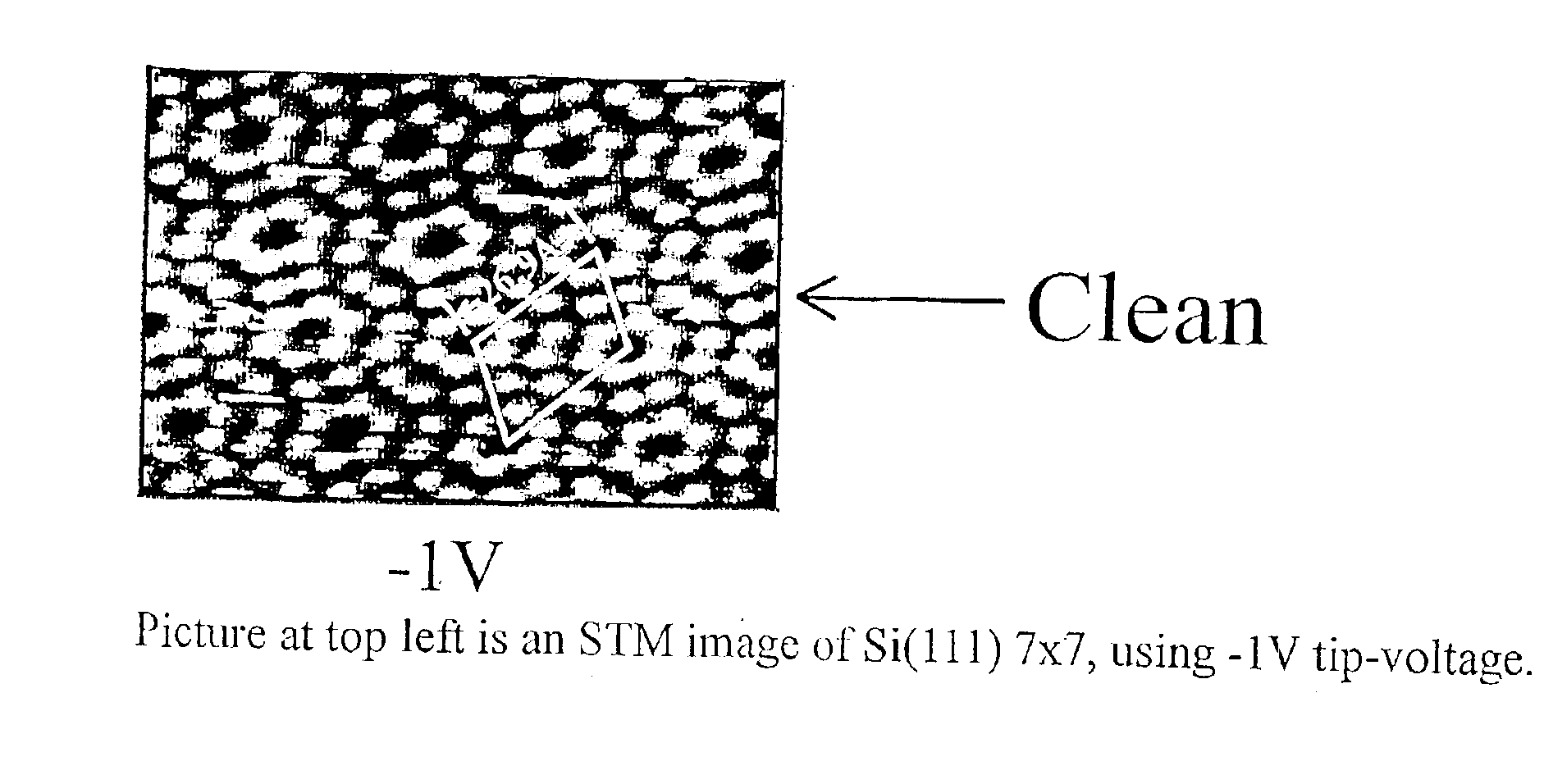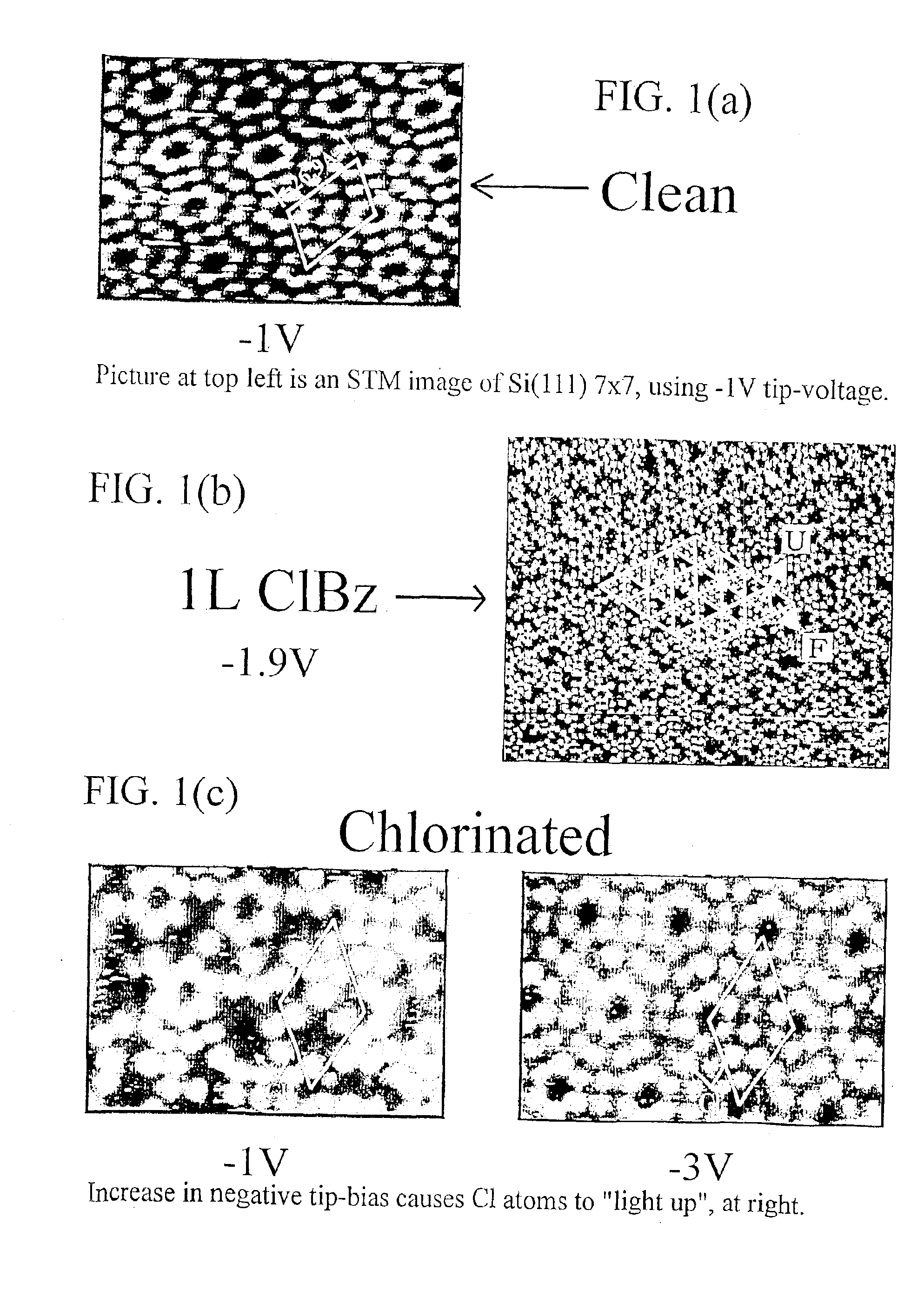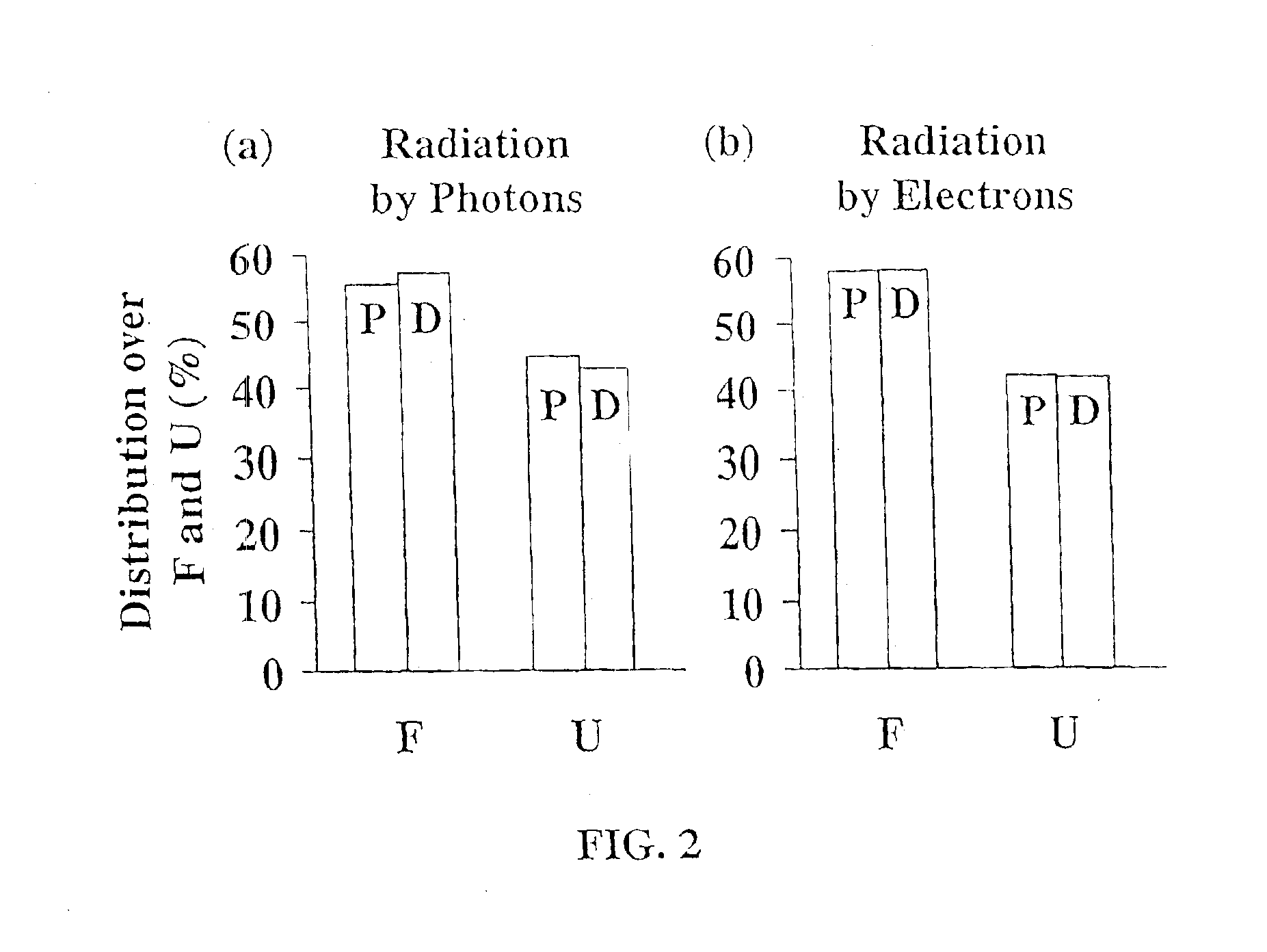Method of molecular-scale pattern imprinting at surfaces
a technology of molecular scale and pattern, applied in the field of pattern imprinting, can solve the problems of not being able to produce large-scale patterns on the surface, not being able to make patterned masks with features smaller than tenths of a micron, and already suffering irreproducibility of masks with such small features
- Summary
- Abstract
- Description
- Claims
- Application Information
AI Technical Summary
Benefits of technology
Problems solved by technology
Method used
Image
Examples
Embodiment Construction
d to Si adatoms on F and U following irradiation by electrons.
[0051]FIG. 3(a) shows a bar graph showing the distribution of parent (ClBz) and daughter (Cl) species over adjacent atomic sites termed “middle atoms” designated (M) and corner atoms labeled (C) following irradiation by photons.
[0052]FIG. 3(b) shows a bar graph showing the distribution of parent (ClBz) and daughter (Cl) species over adjacent atomic sites termed “middle atoms” designated (M) and corner atoms labeled (C) following irradiation by electrons.
[0053]FIG. 4(a) shows a pattern of Cl atoms produced by irradiation using electrons from a scanning tunneling microscope (STM) tip of ClBz adsorbed on Si(111)7×7. The interrupted line of white spots was recorded with the tip at −3V, at which voltage Cl atoms ‘light up’ to form white spots. The −4V pulses at the STM tip were spaced at equal intervals of approximately 59 Å.
[0054]FIG. 4(b) shows a pattern of Cl atoms produced by irradiation using electrons from a scanning tun...
PUM
| Property | Measurement | Unit |
|---|---|---|
| Structure | aaaaa | aaaaa |
| Electrical conductor | aaaaa | aaaaa |
| Energy | aaaaa | aaaaa |
Abstract
Description
Claims
Application Information
 Login to View More
Login to View More - R&D
- Intellectual Property
- Life Sciences
- Materials
- Tech Scout
- Unparalleled Data Quality
- Higher Quality Content
- 60% Fewer Hallucinations
Browse by: Latest US Patents, China's latest patents, Technical Efficacy Thesaurus, Application Domain, Technology Topic, Popular Technical Reports.
© 2025 PatSnap. All rights reserved.Legal|Privacy policy|Modern Slavery Act Transparency Statement|Sitemap|About US| Contact US: help@patsnap.com



